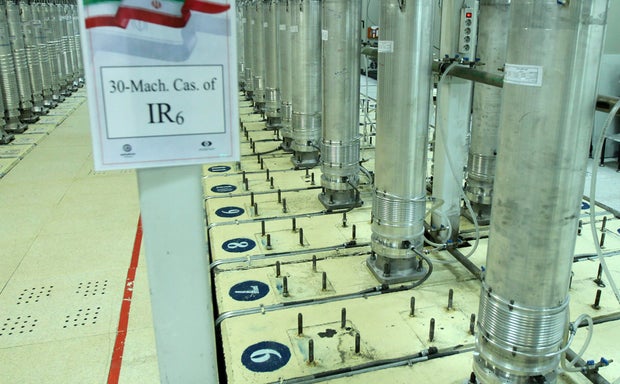United Nations — “No progress.” That’s the United Nations’ nuclear watchdog agency’s latest assessment of international efforts to monitor and verify Iran’s nuclear program.
The global body’s work, stemming from the now-defunct 2015 Iran nuclear deal (JCPOA), related to “verification and monitoring has been seriously affected by Iran’s decision to stop implementing its nuclear-related commitments under the JCPOA” one of the two reports dated September 4 said.
The still-unpublished quarterly reports, obtained by CBS News, on Iran’s nuclear advancement said the “situation was exacerbated by Iran’s subsequent decision to remove all of the Agency’s JCPOA-related surveillance and monitoring equipment.”
The IAEA’s talks with Iran on reinstalling surveillance cameras in the country’s nuclear facilities and answering questions about traces of uranium found at some of the sites previously have not produced results, leading Director General Rafael Mariano Grossi to report to the agency’s Board of Governors that he “regrets that there has been no progress.”
The updates on Iran will be presented at a news conference on the first day of the next 35-nation IAEA board meeting on September 11, agency spokesman Fredrik Dahl told CBS News Monday — about a week before Iranian President Ebrahim Raisi is due to attend the U.N. General Assembly in New York on September 19.
In an agreement reached six months ago between Grossi and Iranian officials, Iran agreed “on a voluntary basis” to “implement further appropriate verification and monitoring,” but the IAEA’s subsequent May report said it had “not had access to the data and recordings collected by its surveillance equipment being used to monitor centrifuges and associated infrastructure in storage, and since 10 June 2022, when this equipment was removed, no such monitoring has taken place.”
The IAEA did report some limited progress in monitoring in May, but not as required under the terms of the 2015 nuclear deal, which effectively fell apart, despite efforts by European leaders to salvage it, after then-President Donald Trump pulled the U.S. unilaterally out of the agreement in 2018.
According to the IAEA, Iran’s enrichment of uranium up to 60% purity has continued, thought it slowed from almost 20 kilograms per month to about 6.5 over the period since the last report was issued in May. Some Western diplomats see that as a small concession by Iran, as inspectors said Iran’s stockpile of highly-enriched uranium grew by 7% over the last quarter compared to 30% during the previous one.
The U.S. and some of its allies have long believed that Iran is trying to cover up clandestine work toward a nuclear weapons program, though the Islamic republic has always denied that. While 60% enriched uranium is not considered weapons-grade, it is a relatively short technical step away from the level of purity required for nuclear weapons.
“As a technical matter, a slowdown of 60% won’t do a much to dispel non-proliferation concerns,” Dr. Ali Vaez, director of the Iran Project and senior adviser to the President of The Crisis Group thinktank told CBS News on Monday. “Iran still has sufficient fissile material for multiple weapons if enriched to weapons-grade. Breakout time [to hypothetically launch a weapons program] remains close to nil. IAEA access remains limited, and safeguard questions remain outstanding.”
Vaez added, however, that the slow-down in the high-enrichment program by Iran could still hold some meaning.
“As a diplomatic signal, it would be the first real indication of some degree of deceleration on Tehran’s part after several years of continued expansion,” he told CBS News.
The two latest IAEA reports will be published at a difficult time for U.S. negotiators, who have been working to negotiate a prisoner swap and on discussions about the release of billions of dollars in Iranian assets ringfenced by the U.S. government. It also comes on the heels of top U.S. negotiator Rob Malley leaving his role.
Western powers argue that, regardless of any incremental slowdown in high-enriched uranium production, Iran is getting too close for comfort to the theoretical ability to produce nuclear weapons. Iran’s existing stockpile of uranium, if further enriched to weapons-grade, would be sufficient to produce two nuclear bombs, according to the IAEA’s previous report from May.
In unusually stern language, the new IAEA reports say Iran’s decision to remove all of the agency’s monitoring equipment “has had detrimental implications for the Agency’s ability to provide assurance of the peaceful nature of Iran’s nuclear program.”



